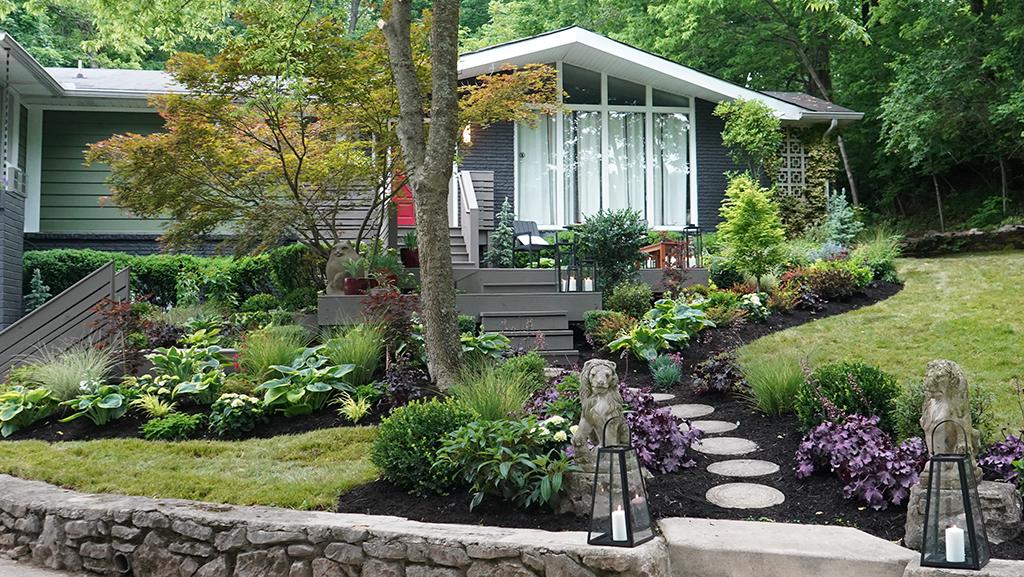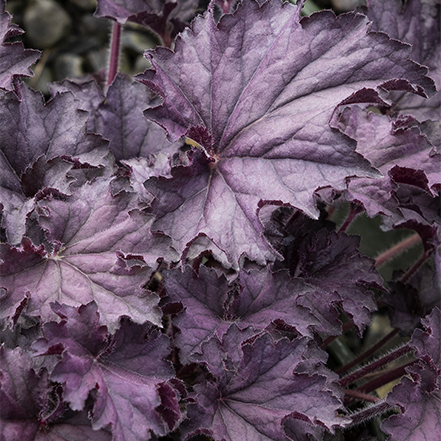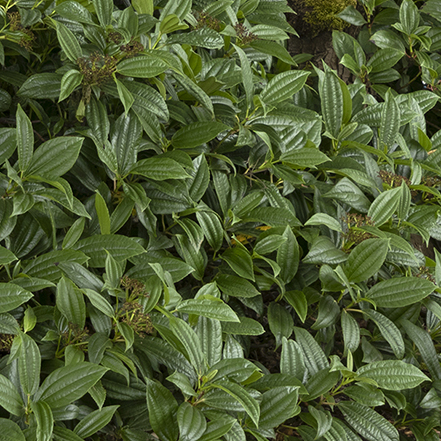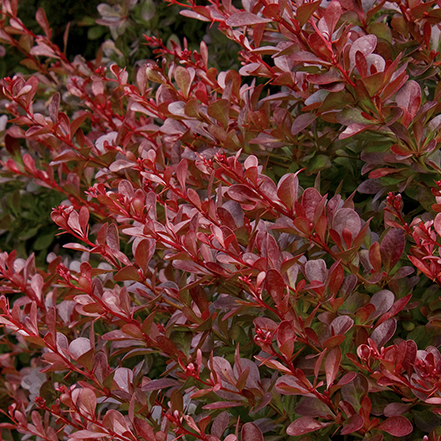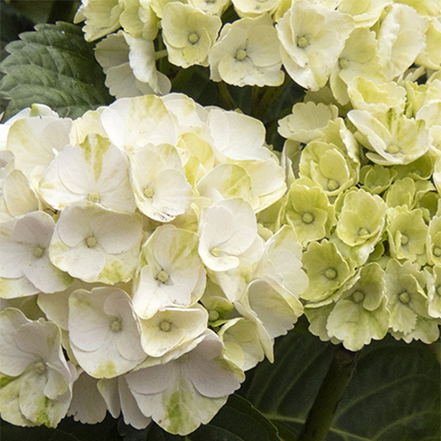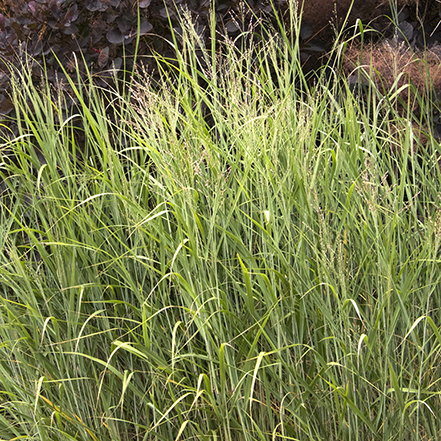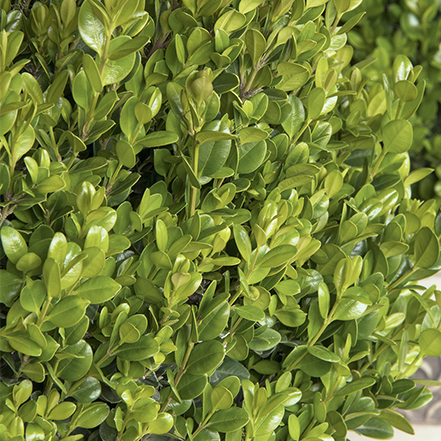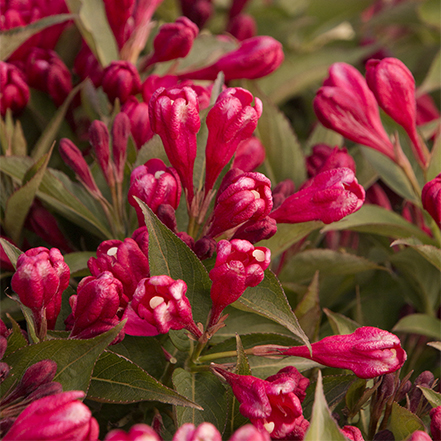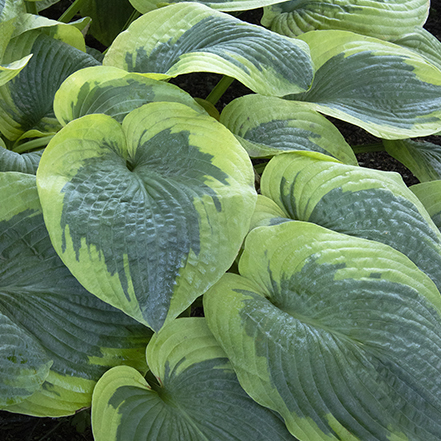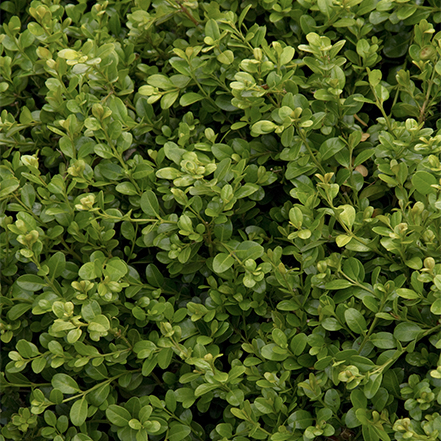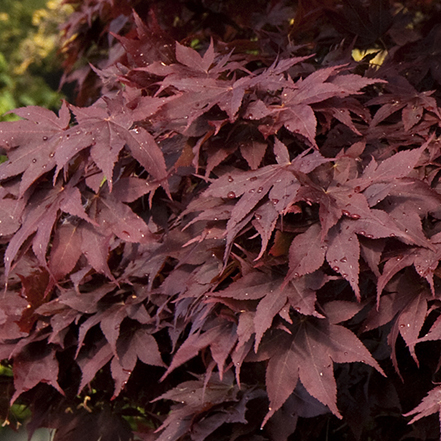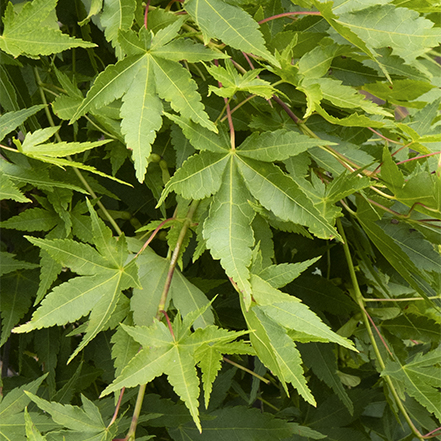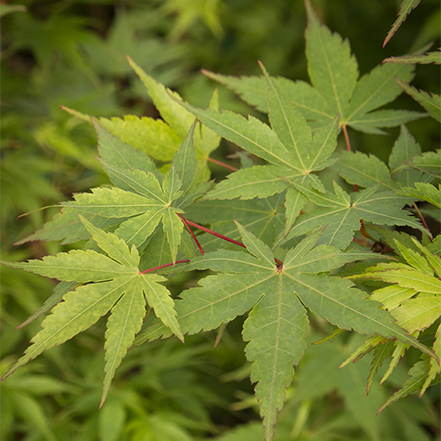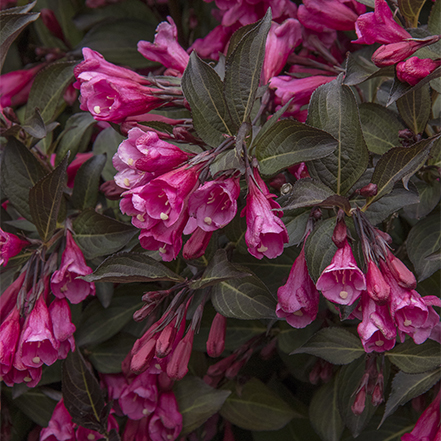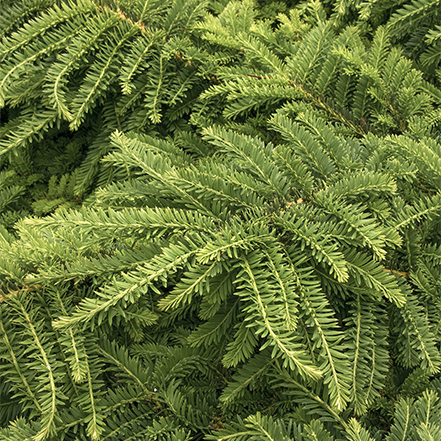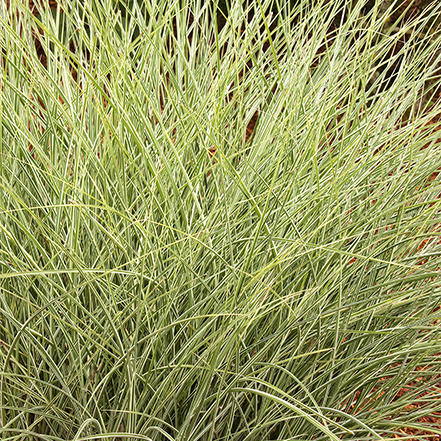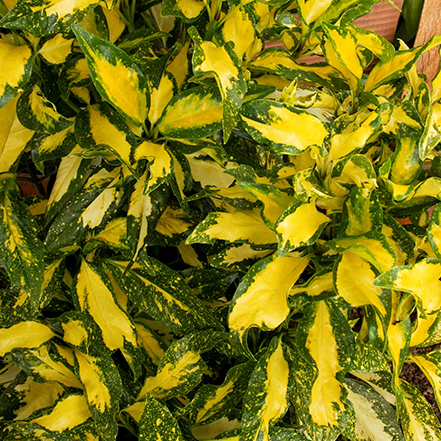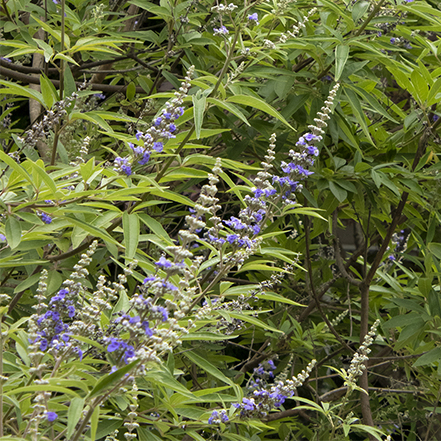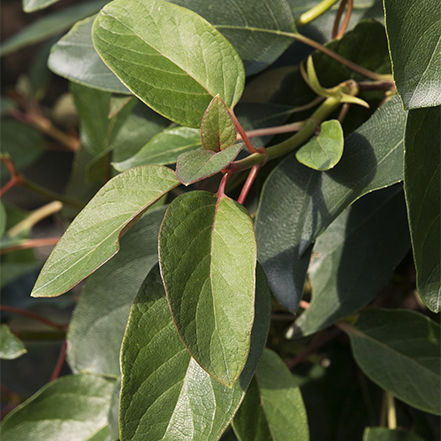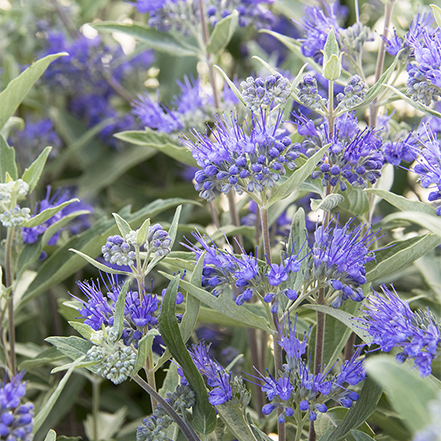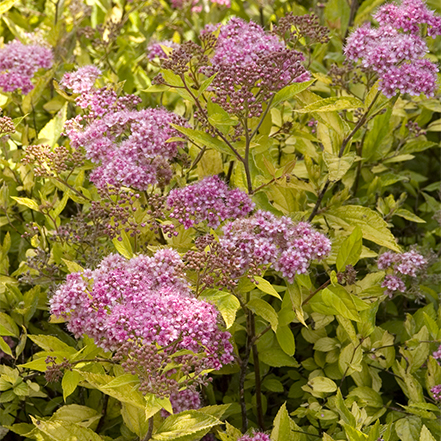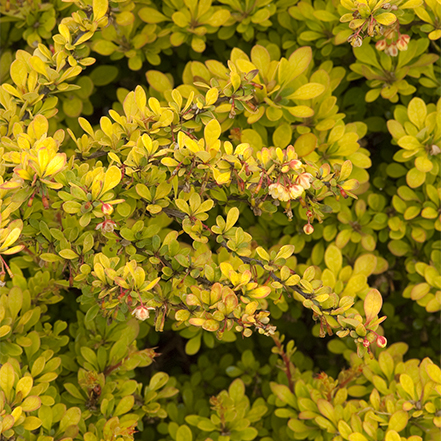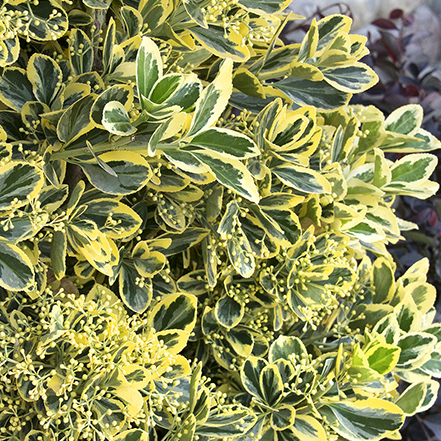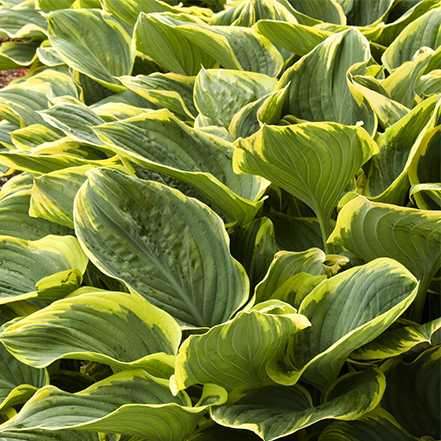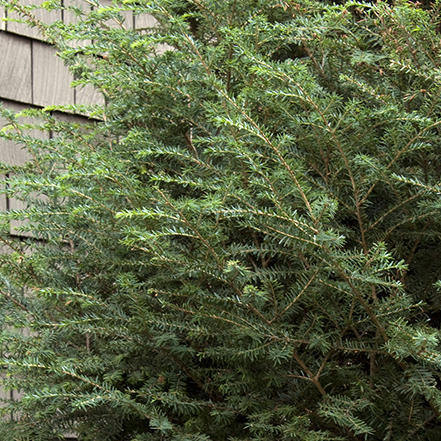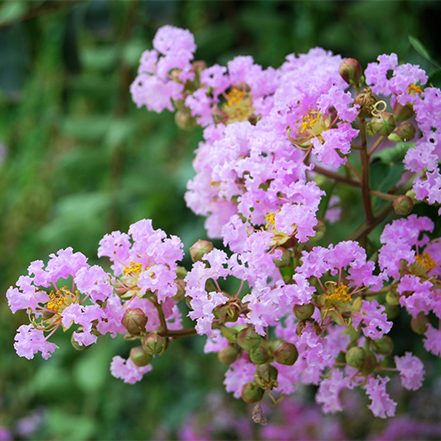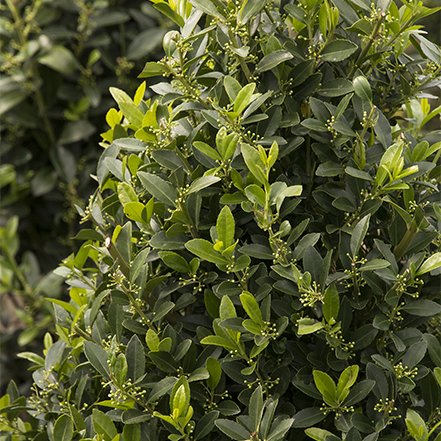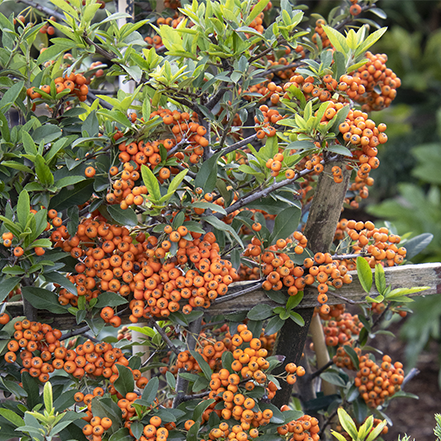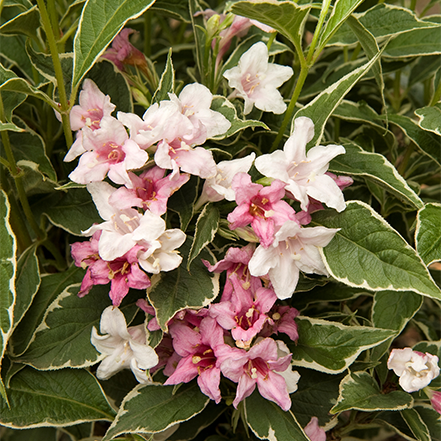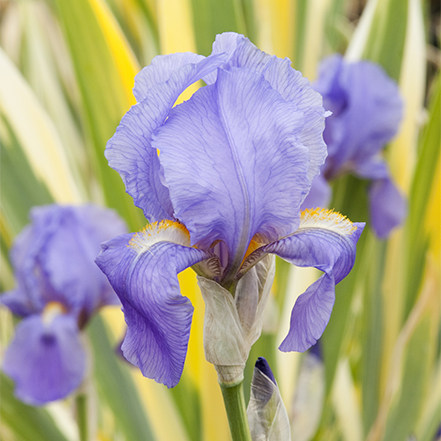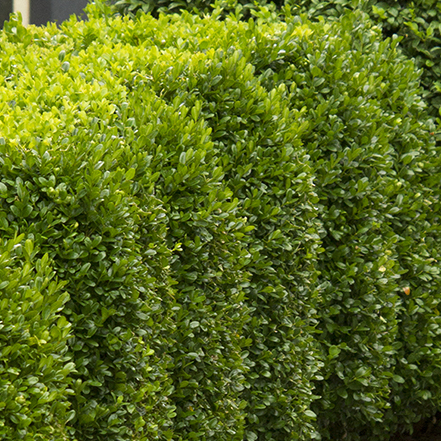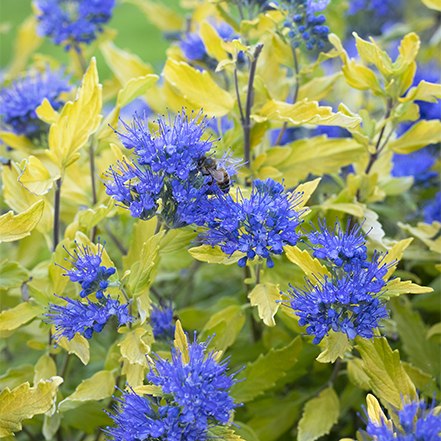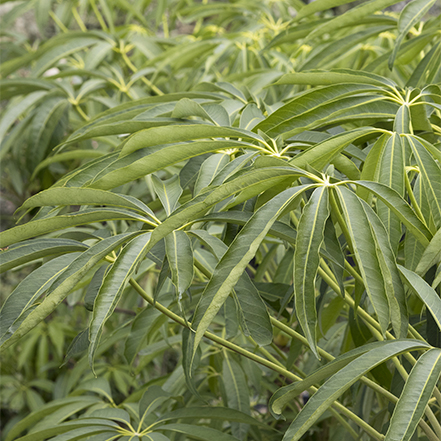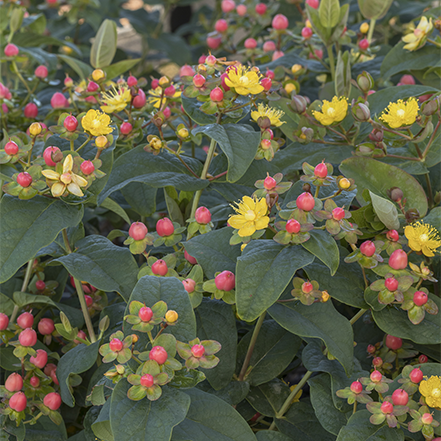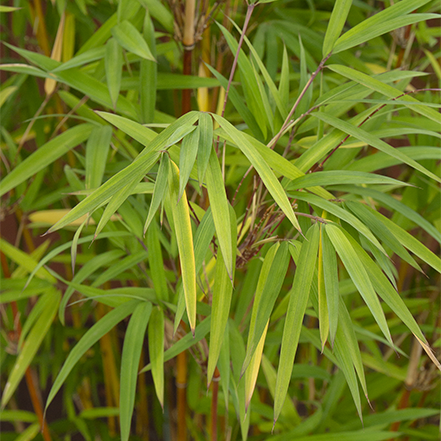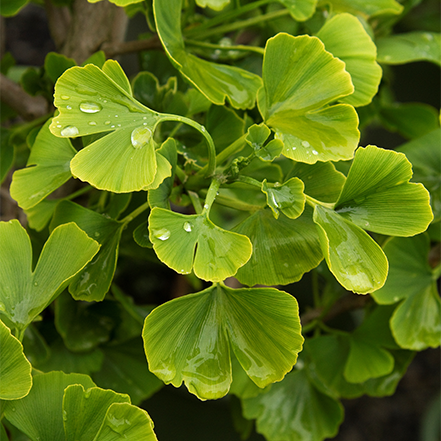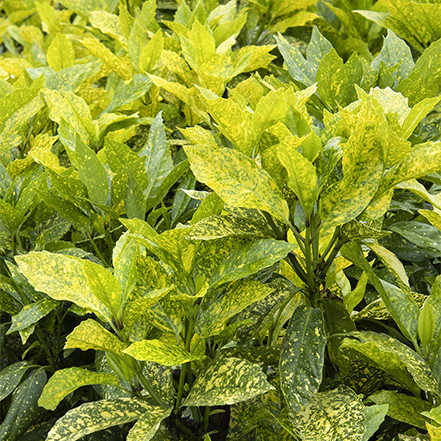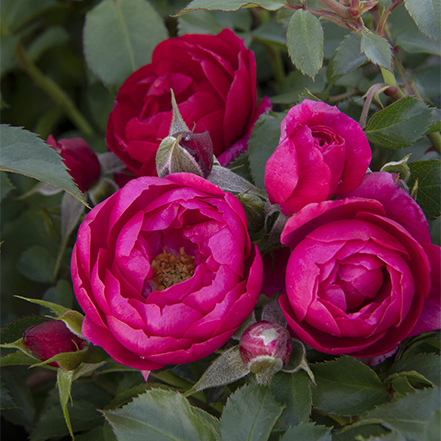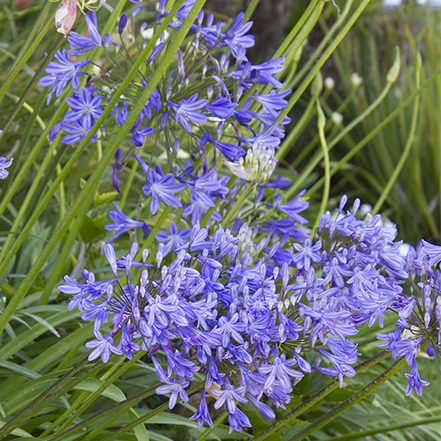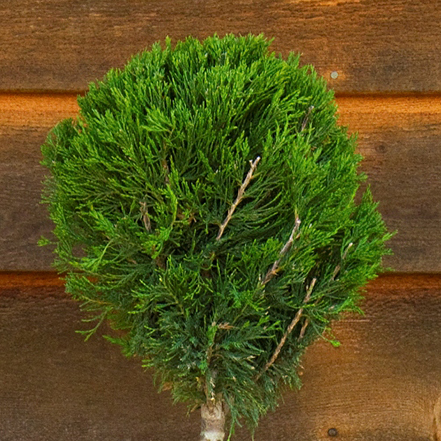There's nothing more inspiring than seeing the results of a huge garden makeover. HGTV's new show Curb Appeal Xtreme delivers lessons almost anyone can use, no matter the size of your lot.
We went behind-the-scenes with landscape designer Jamie Durie to get an up-close look at his garden design. We also got to see his plant choices in one of the most extreme garden makeovers we've ever seen. As Jamie says, "this was without a doubt the juiciest plant list I've ever put together." You can get more details on that juicy list below.
In this conversation with Jamie, we focus on Ann and Tony's wooded, shady and large Nashville-area yard. As seen in season one, episode two ("Meeting at Midcentury").
Stay tuned—we'll share more of Jamie's design tips from future episodes. Remember to follow us on social media @MonroviaPlants to get even more plant and design information from the episode.
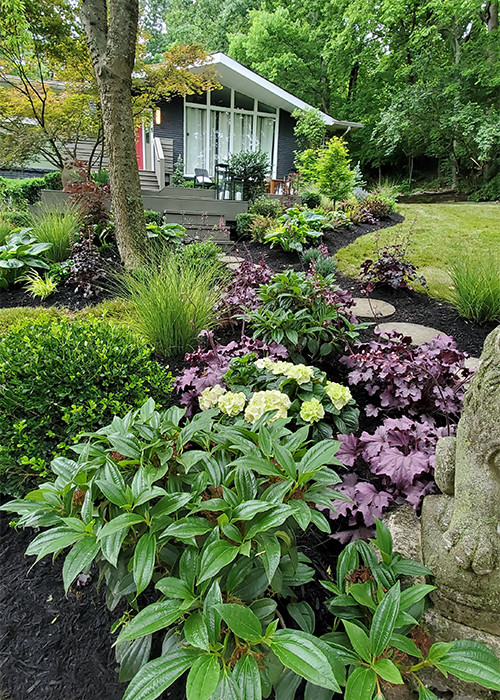
(Above and above right) In the front yard, Jamie Durie helped architect and designer John Gidding bring the midcentury modern house to life with a ribbon of GRANDE™ Amethyst Heuchera, lush David Viburnum, hostas, Seaside Serenade® Cape Lookout Hydrangeas, and airy clumps of Heavy Metal Blue Switch Grass.
Behind the Scenes of a Huge Garden Makeover
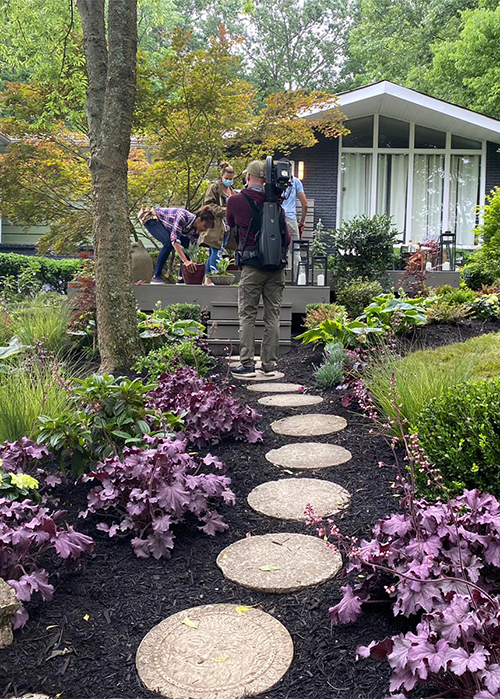
Q: How would you describe the site and setting of Ann and Tony's yard?
The site was essentially like an amphitheater, and the gradient faced toward the east. Tony would sit on the porch and enjoy his morning coffee in the sun. He would sit there in the sun and enjoy his favorite tree, this beautiful Japanese maple—it looks like an Acer Palmatum 'Bloodgood'—that was the hero of the front yard. He loved that Japanese maple, so that was a good calling card for me to begin my plant palette.
Not only that, but the whole place was in a grove of natural sugar maples, which are endemic to the area. I fell in love with the sugar maples in Nashville. They inspired me to use a variety of Monrovia's Japanese maples in this project.
Q: John designed a cascading deck for the front yard. How did the garden design unfold to support that idea?
Our focus was really to give them the maximum use out of their garden and allow them to use the front yard as another room in the house. We did this by building that series of floating decks and wrapping them in beautiful Japanese maples.
John and I popped a couple of those Sango Kakus around the floating decks and stairs. And that provided a beautiful little breakfast garden for Ann and Tony to enjoy their coffee and breakfast in the morning sun.
WHY IT WORKS: Notice that the color palette of plants is purples, reds, and greens, melding beautifully with the gray exterior. This plant palette unifies the front yard and draws the eye up to the front door.
Plants that Complement Japanese Maples in the Front Yard Design
GRANDE™ Amethyst
Heuchera
Tough, adaptable, and stunning with wavy purple leaves and tiny pink flowers. Up to 14" tall and 28" wide with 30" tall flower spikes. Zones 4-9.
Cherry Bomb
Japanese Barberry
The deep crimson color and dense foliage make this shrub a perfect accent or low hedge. Red berries in fall. Up to 4' tall and wide. Zones 4-8.
Seaside Serenade® Cape
Lookout Hydrangea
Showy and sturdy, with long-lasting, large blooms, and thick dark-green foliage. Up to 3.5' tall and 3' wide. Zones 4-9.
Heavy Metal
Blue Switch Grass
Stiff, metallic blue blades retain an upright habit without flopping. Up to 3' tall and 3' wide. Zones 4-9.
Weigela Provides a Powerful Pop in a Border
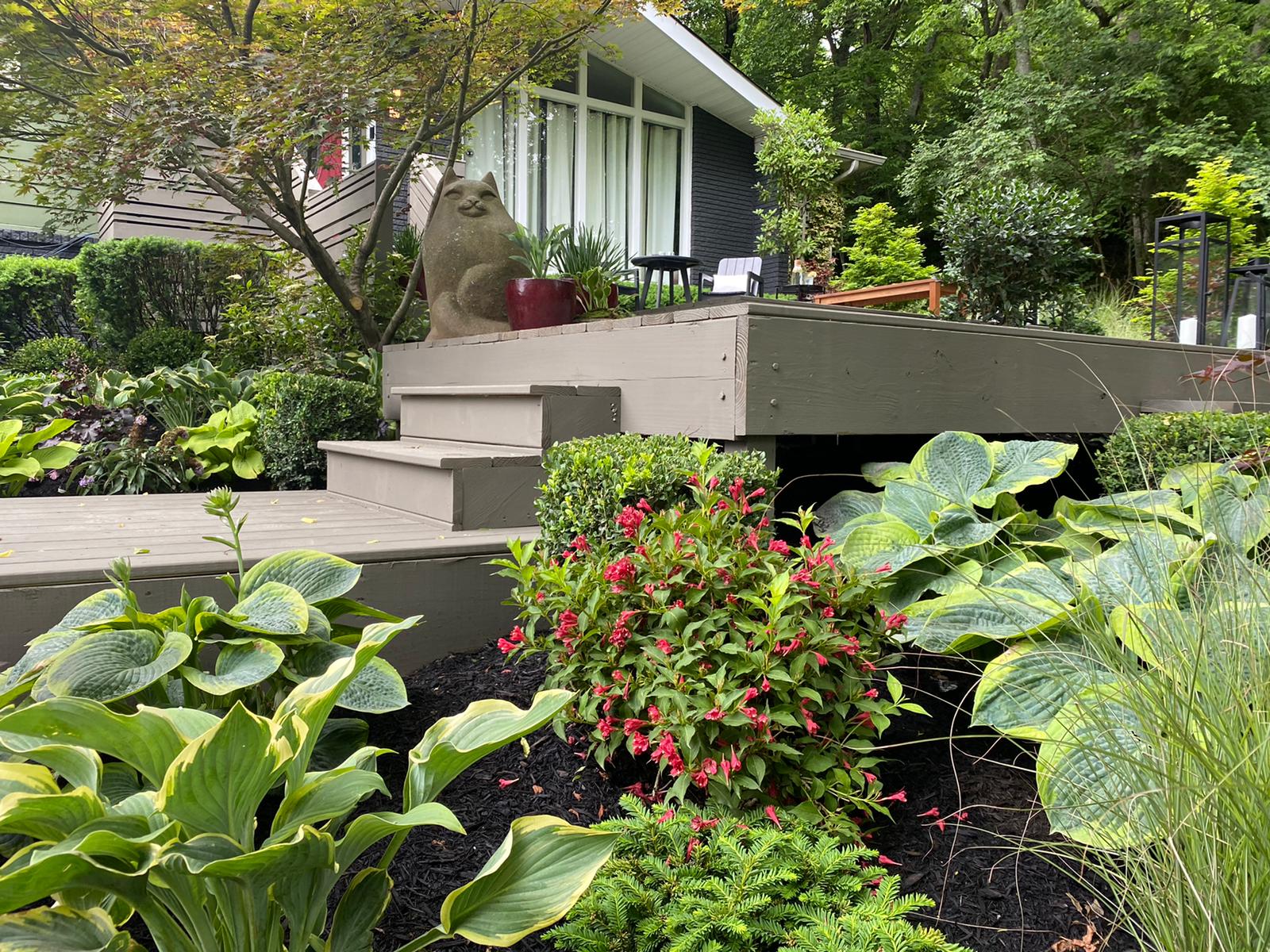
Q: You and John had a bit of a tug-of-war with those Crimson Kisses® Weigelas. What is it about that plant?
The Crimson Kisses were in full flower in summer and John is like a flower junkie. The moment he sees flowers he's ready to grab them! The crimson flowers tie in perfectly with the front door color, so it made sense that John would want to steal some from the backyard.
Q: We spotted a lot of boxwoods here. How do those play into the design?
I used the Buxus 'Green Beauty' and 'Faulkner' around John's cascading deck so that we could have some evergreen color and structure around it. No matter what time of year it is, this unique entry architecture will feel like it is wrapped in abundant foliage.
WHY IT WORKS: Jamie thinks about how to keep the garden exciting year round. He mixes foliage sizes and texture to create a feeling of lushness. He also uses seasonal color to punctuate the mostly green borders.
Crimson Kisses®
Weigela
A more compact reblooming variety with a tidy shape and bright red flowers. Up to 3' tall and wide. Zones 4-9.
Olive Bailey
Langdon Hosta
A large hosta with wide light-green margins and deeply corrugated texture. Up to 3' tall and 6' wide. Zones 4-8.
Green Beauty
Boxwood
An evergreen shrub that's well-suited to pruning into formal shapes. Up to 6' tall and wide unpruned. Zones 5-9.
Jamie's Favorite Japanese Maples and How He Uses Them
Q: Japanese Maples play a big role in the front and backyard designs. Tell us a bit about how you chose from all the possible Japanese maples Monrovia grows.
I used the Acer palmatum Sango Kaku around the deck in front as well as throughout the garden in the back. 'Sango Kaku' is my absolute favorite maple. It has this incredible coral-red trunk in the winter, and the new foliage is bright green. "Sango Kaku" means "coral tower" in Japanese, and that's because of its unique bark color. It is stunning all year round.
The deep red of Bloodgood ties in Tony's favorite tree from the center of their front garden. Tony planted this tree when he and Ann first started dating, so it was an important aspect of the design for that reason, as well.
I also got the Emperor I®, Purple Ghost, and the weeping Ryusen Japanese maples to use in both the front and back gardens. All of those were chosen for a variety of color, foliage, form, and of course the Sango Kaku for its red stems and trunk.
WHY IT WORKS: Blending different varieties of one species is a way to create visual appeal without chaos.
Bloodgood
Japanese Maple
Burgundy foliage turns brilliant scarlet in fall. Red-black bark is striking in winter. Slowly grows up to 20' tall and 15' wide. Zones 5-8.
Ryusen Weeping
Japanese Maple
A unique specimen with green palmate leaves and a weeping form ideal for narrow spaces. Up to 20' tall and 6' wide. Zones 5-7.
Coral Bark
Japanese Maple
Brilliant red-coral bark on young branches and deeply cut, pale-green leaves with red margins. Up to 25' tall and 20' wide. Zones 5-8.
An "Amphitheater of Color" in Jamie Durie's Shaded Backyard Design
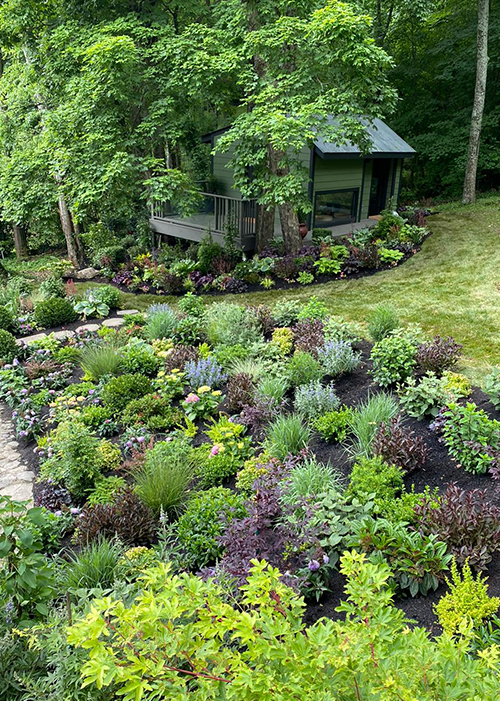
WHY IT WORKS: The tapestry of plants relies on a careful weaving of leaf type, size, and color. Think of your landscape as a tablecloth, and lay out your important pieces first before planting. Don't be afraid to rearrange a few times to get the right balance before digging.
Q: Let's talk about your design in the backyard. The color palette feels unified but has enough plant diversity to fill a large space without getting boring. What’s your secret?
I'm a big believer in the "put and look" theory. Before the plants go in the ground, I lay every plant out exactly where I want it to go.
I'm first thinking about shapes and imagining what shape the plants will get to when they are mature. And then I distance the plants away from each other so they have the optimum growing conditions. I do push things to the limit in spacing because I want to create a look of abundance.
I distribute the evergreens and deciduous plants in a very even way so that I'm layering a tablecloth of evergreen plants around the deciduous plants, like the Sango Kaku, so that it has a nice evergreen backdrop all year long.
Then, I take another sweep over the layout and I look at the color. I want to make sure I've got a good collection of color interest all through the landscape.
Whether I'm colorblocking the plants or creating a tapestry of color, I'm trying to create balance.
Creating lush abundance in part-shade conditions
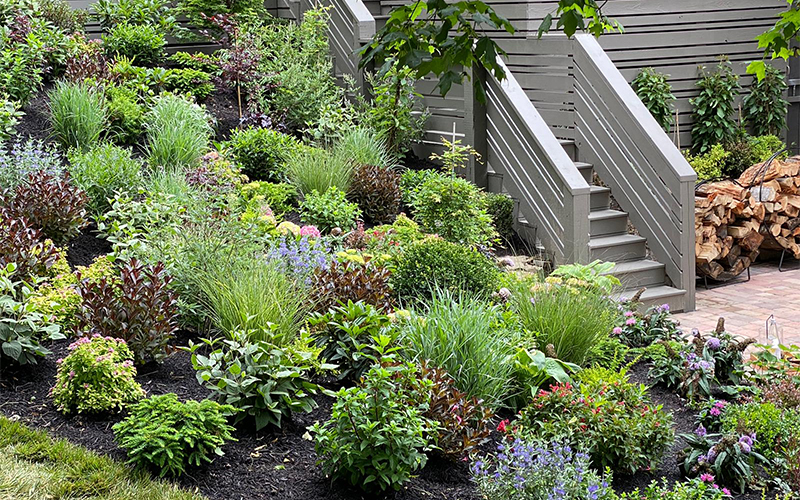
Q: We see a lot of lush foliage with your use of weigelas, ferns, hostas, and yews.
Ferns are a great way of celebrating a shaded area and making it feel textured and lush. What I love about ferns is that they make a great "backfiller" in the shade. You can tuck them into open spaces in the garden.
The blue foliage of the Blue Angel Hostas plays nicely with the blue foliage of the Horstmann Blue Atlas Cedar. I wanted to pay homage to Monrovia's Rosedale family with the popular hosta, Rosedale Golden Goose, which has a gorgeous bright color. Regal Splendor Hosta and Olive Bailey Langdon Hosta both add texture and variegated color to the mix.
I just love those spreading yews. What beautiful foliage they have! They give me reliable structure in the garden. They are frost tolerant but when the spring comes around, this vivid green, soft feathery texture envelopes the entire plant. I used both the Taxus Emerald Spreader® and the Dense Spreading Yew.
Wine & Roses® Weigela and Crimson Kisses® Weigela are both big players here. Wine & Roses has a gorgeous dark-purple hue, which ties into the deep purple of the GRANDE™ Amethyst Heuchera.
Q: What perennials did you use to add blooms to this part-shade garden?
I wanted to bring a lot of flowers into the landscape and texture. The Pugster Amethyst® dwarf butterfly bush helped me do that. That brought not just flowers, but butterflies, and I knew that the homeowner, Ann, loves butterflies. The Dark Knight Bluebeard brings bees as well as colorful blooms. The Midknight Blue® Agapanthus made me fall in love with Agapanthus again. It's an interesting variety with dark violet-blue flowers on a plant that many of us can take for granted.
WHY IT WORKS: In transition areas of the garden near entertaining spaces, it's important to soften the edges. Due this by placing interesting plants in this hardscape. By starting with structure—the yews—and complementing with a wide array of foliage size and color, Jamie creates an inviting place for the eye to rest whether looking down from the deck or walking up from the patio. Choosing plants with a bit of history like the hosta or multiple uses (the butterflies!) gives this garden added dimensions.
Turning an old shed into a luxurious yoga oasis
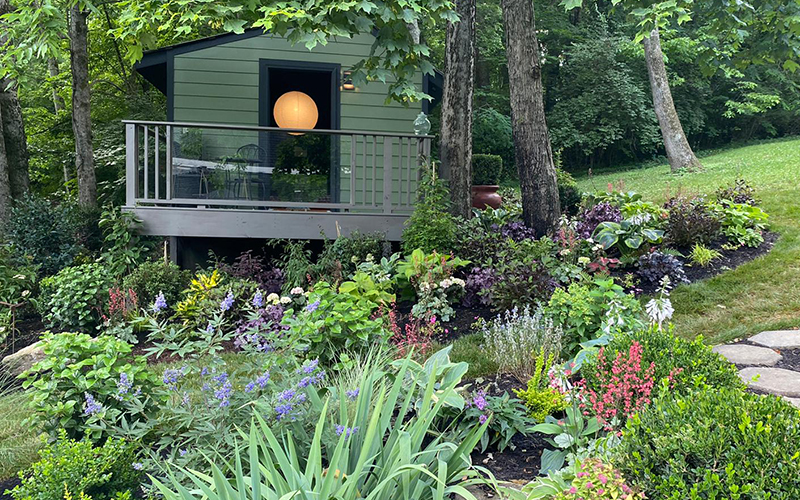
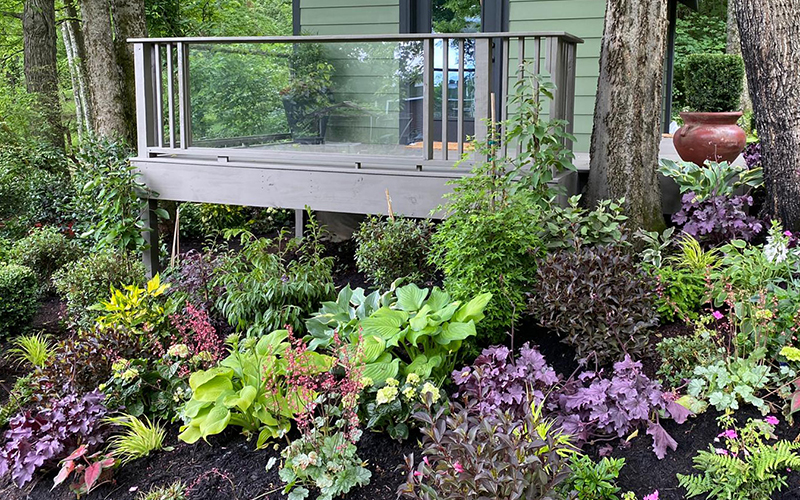
Q: The yoga room. Tell us about the inspiration behind those ground-level windows in that shed makeover.
We quickly learned that Ann and Tony were meditators and yogis, so we wanted to turn that shed out back into a yoga room.
I first learned yoga in Bali, in Indonesia. And so I based the design on my experience in Bali. I wanted to turn that shed into my interpretation of a Southern Hemisphere Balinese yoga pavilion, only in the chillier climate of the Northern hemisphere.
I thought "how am I going to give them the experience of a Balinese yoga pavilion but still have it closed off to the elements and comfortable?" It turns out that they had a series of tall windows stored in a shed, so I took those windows and laid them on their sides at the bottom of the wall to force their gaze down into the garden. It gives them privacy on the top half of the wall, and on the bottom half of the wall, they have these garden viewing windows — which is exactly what the Japanese do.
Q: Tell us about that plant tapestry between the deck and yoga pavilion—what’s the design principle behind this?
I used some Aucuba and Japanese maples, some of those beautiful variegated hostas, and heucheras to bring the magenta in. So it was a real burst of foliage color contrast. I like to paint with the plant foliage rather than wait for flowers. I use Picturata Aucuba all the time in part- and full-shade areas because that vivid gold foliage really brightens the landscape.
WHY IT WORKS: The yoga room brings the garden view inside in an unexpected way. By using foliage instead of flowers for excitement, the garden view will always look beautiful year round.
9 Featured Plants in This Colorful Tapestry Shade Garden
Wine & Roses®
Weigela
Dark, glossy foliage contrasts beautifully with rosy-pink flowers. Up to 5' tall and wide. Zones 4-8.
Emerald Spreader®
Japanese Yew
A low-maintenance, evergreen, and sturdy groundcover with attractive dark green foliage. Up to 3' tall and 10' wide. Zones 4-7.
Morning Light
Maiden Grass
Green blades with creamy white margins and midveins create a shimmering appearance. Up to 5' tall and 4' wide with plumes up to 6' tall. Zones 5-9.
Chaste
Tree
Large clusters of fragrant lilac-colored blooms backed by gray-green foliage. Up to 25' tall and wide. Zones 5-9.
Red Rhapsody®
False Hydrangea Vine
An extremely rare selection with varnished-red new growth, creamy flowers, and self-clinging stems. Up to 15' tall. Zones 6-9.
Dark Knight
Bluebeard
A mounding shrub with dense silver-gray foliage and deep purple-blue flowers that bloom all summer long. Up to 2' tall and wide. Zones 5-9.
Limemound®
Spirea
Bright yellow foliage matures to lime green and changes to orange-red in fall. Soft-pink blooms in summer. Up to 3' tall and 4' wide. Zones 3-9.
Sunsation®
Japanese Barberry
Vibrant, golden foliage with an orange cast on a compact form that contrasts well with green-toned plants. Up to 4' tall and wide. Zones 4-8.
Jamie's Advice for New and DIY Designers
Q: Any advice for home gardeners trying their hand at design?
First off, do a light and shade audit. Draw a diagram of your yard and draw bubbles over it of how much sun or shade you get in that location.
Then, look at assets and liabilities. Your assets are things like great views, space, or other conditions. Liabilities can be a lack of privacy, brick walls, or other things you don't like about your space.
Finally, do a functional analysis. Write down all of the things you want to do in your garden. Do you want to dine? Cook? Lounge? Play? Grow food? Figure out what functions are most important to you, and then match those functions with the light requirements and space that you're working with.
Featured plants in Season 1, Episode 1
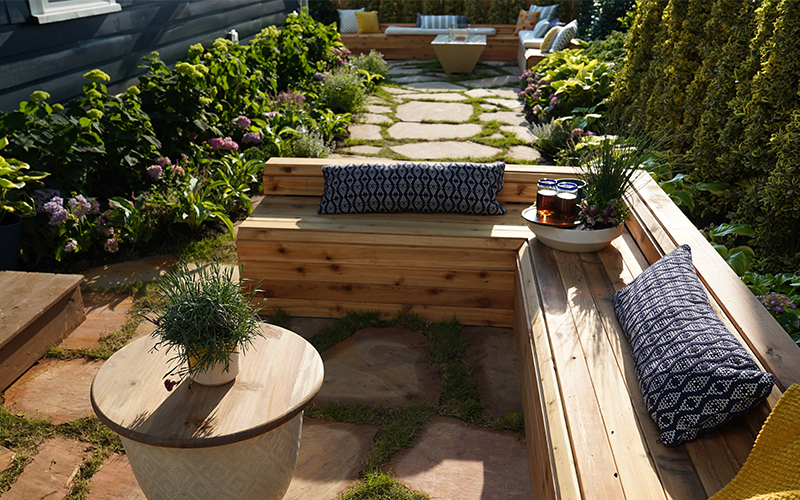
In the first episode of HGTV’s Curb Appeal Xtreme, Jamie designed a backyard garden perfect for entertaining. To create cozy living walls that seem to glow in the sun, he chose Chollipo Euonymous , and complemented those with gold-edged Sagae Hosta.
Chollipo
Euonymus
A dense evergreen shrub with a tight growth habit that lends itself well to topiaries, hedges, and shapely pruning. Up to 12' tall and 6' wide unpruned. Zones 6-9.
Sagae
Hosta
Big, bold foliage features a wide band of gold along leave edges. Up to 18" tall and 36" wide with blooms that reach 48" tall. Zones 4-8.
Emerald Fountain®
Canadian Hemlock
Perfect for low-maintenance hedges, with densely branched, bushy evergreen foliage. Up to 10' tall and 3' wide. Zones 4-8.
Featured Plants in Season 1, Episode 3
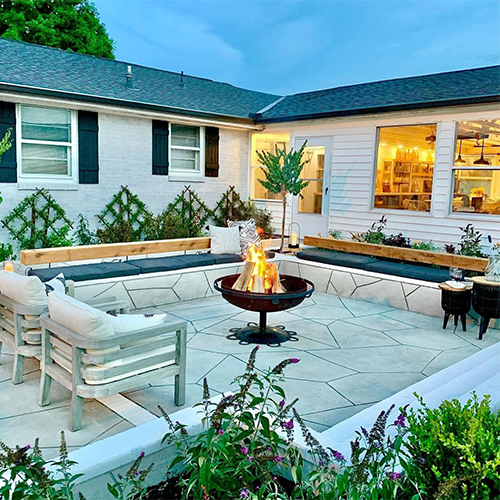
Muskogee
Crape Myrtle
A large shrub or small tree with panicles of light lavender-pink flowers that appear amid glossy green foliage, which turns red in fall. Up to 20' tall and 15' wide. Zones 6-9.
Emerald Colonnade®
Holly
A dense, evergreen holly with a natural pyramidal form and green foliage that is tolerant of shearing. An excellent topiary specimen. Up to 12' tall and 8' wide. Zones 7-9.
Yukon Belle®
Pyracantha
Hardy evergreen to semi-evergreen shrub prized for its mid-winter color. Tolerant of shearing and perfect for flat-wall espalier. Up to 10' tall and 8' wide in natural form. Zones 5-8.
Featured Plants in Season 1, Episode 4
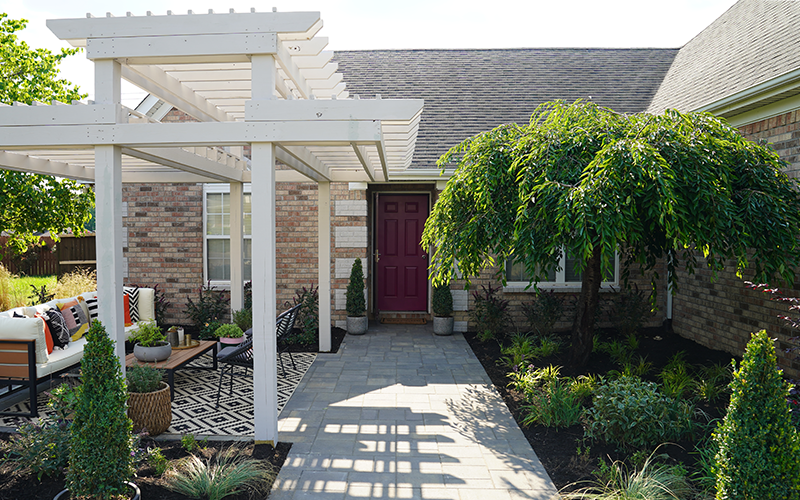
Jamie, John, and Rachel transformed this suburban property into an entertainer's paradise. Among the many new outdoor rooms is the front patio pictured above, with a two-tiered pergola that offers much-needed shade from the Tennessee sun. Green Mountain Boxwoods are pruned into cone topiaries and provide stately architecture along the entryway. Miss Molly Butterfly Bushes act as colorful, pollinator-friendly foundation shrubs under the windows (and as inspiration for the front door color). All Gold Japanese Forest Grass, Variegated Sweet Iris, and Magical® Fantasy Weigela brighten the shaded garden. These are planted under the tree while Blue Oat Grass softens the edges of the pathway in the foreground.
Magical® Fantasy
Weigela
Pure white leaf margins provide a dramatic contrast to the green leaves. Profuse soft pink flowers cover the shrub in spring. Up to 3' tall and 4' wide. Zones 4-8.
Variegated
Sweet Iris
Green and golden-striped foliage brightens the garden while lavender-blue bearded flowers provide contrasting color. Forms clumps up to 2' tall. Zones 4-9.
Green Mountain
Boxwood
A vigorous evergreen shrub with bright green foliage. The naturally cone-shaped habit is perfect for topiary forms. Up to 5' tall and 3' wide in natural form. Zones 4-9.
Look in the backyard for these Monrovia-exclusive, easy-care shrubs
La Barbe Bleue™
Bluebeard
Shiny, fragrant yellow foliage adds a warm glow to the garden all summer. Deep-blue flower spikes offer contrast in summer and early fall. Up to 36" tall and 30" wide. Zones 5-9.
Winged Phoenix™
Hardy Schefflera
A new, stunning, and extremely hardy selection that adds sensational tropical flair. New foliage emerges soft green and ages to a silvery green on chartreuse petioles. Up to 15' tall and wide. Zones 7-10.
FloralBerry® Pinot
St. John's Wort
Yellow, cup-shaped flowers produce clusters of bright red berries on rust-resistant plants with deep green foliage. A fuss-free shrub perfect for borders and containers. Up to 3' tall and wide. Zones 5-9.
Featured Plants in Season 1, Episode 5
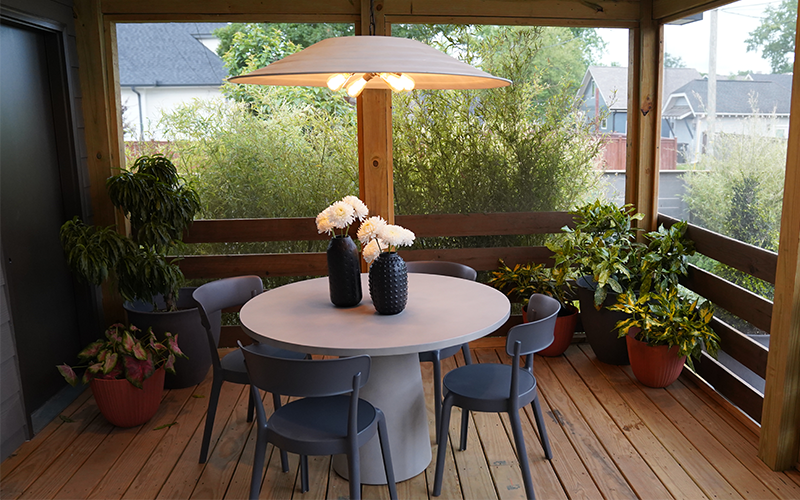
As homeowners Brian and Camey prepare for a new baby, John, Jamie, and Rachel get their narrow yard ready for family life. The design includes a focus on providing privacy for the new family of three. It also showcases a simple color palette that uses foliage to create a feeling of cozy, peaceful solitude.
The above picture is from inside the elevated back porch. Here Yellow Groove Bamboo (contained in a zinc tub) provides an immediate feel of lush, secluded privacy from outside. In the right corner of the porch, Picturata and Mr. Goldstrike Aucubas add a soft glow and beautiful texture. These bold and beautiful evergreen shrubs are perfect for containers indoors or on covered patios. In the left corner, a Garden Gold Mini Peach Tree adds a vertical element that will provide even more lushness in this setting.
Jamie also chose a favorite non-spreading bamboo variety, Golden Goddess, around the fire pit area in the corner of the backyard. He uses Gingko Biloba varieties Autumn Gold and Jade Butterflies to provide distinctive foliage and more privacy in this family-focused yard. Plus, containers with Winter Gem Boxwood pyramidal topiaries add structure to the facade of the back porch.
Golden Goddess Bamboo
A well-mannered bamboo that is easily maintained to a modest 8' tall. Excellent for containers, and has a graceful, arching form. Zones 8-10.
Jade Butterflies Gingko
Dwarf, densely branched with lovely gold fall color. Becomes a stunning shade tree with age. Slowly grows up to 15' tall and 10' wide. Zones 4-9.
Mr. Goldstrike Acuba
A bold source of color for shady gardens or indoor corners, the large, dark-green leaves are speckled with gold variegation. Up to 6' tall and 5' wide. Zones 6-10.
Featured Plants in Season 1, Episode 6
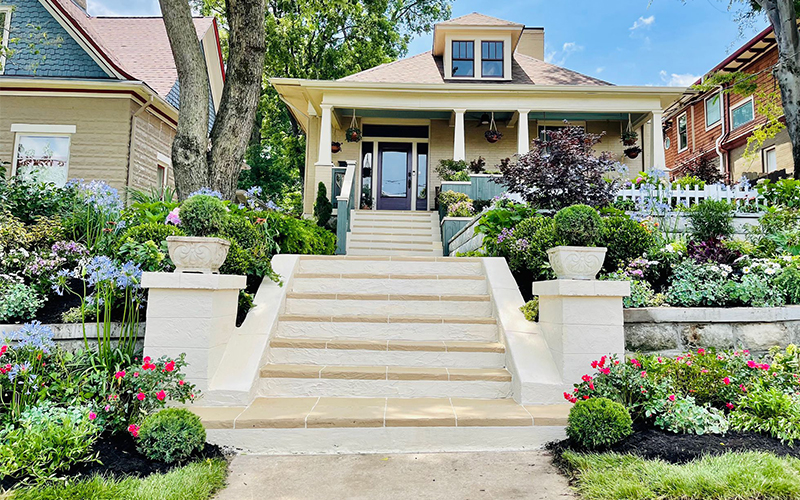
The Curb Appeal Xtreme team honored the Craftsman-style architecture of this 1940's home. They accomplished this by using the craftsmanship of Monrovia topiaries and perennials. The front yard (pictured above) was planted with lush, easy-care perennials like Seaside Serenade® Hamptons Hydrangeas and Dense Spreading Yew. Queen Anne Agapanthus was used throughout the front yard to provide a consistent source of color. Nitty Gritty™ Pink Rose welcomes visitors with bright, welcoming color at the base of the entry stairs.
The formal design of the backyard pavilion garden relies on a variety of topiaries to give it a feeling of heritage and grace. Easy-care, evergreen Spartan Junipers in globe, 2-ball, and 3-ball shapes draw the eye around the pavilion. Pyramidal and cone Winter Gem Boxwood topiaries were added to provide different texture and shape. "Topiaries are living sculpture," says Jamie Durie, and Monrovia is known for exquisitely consistent and artful forms unlike any other grower.
Nitty Gritty™
Pink Rose
Durable, own-root roses with prolific, magenta-pink double blooms. Self-cleaning, easy-care habit with excellent disease resistance. Up to 3' tall and 4' wide. Zones 4-9.
Queen Anne
Agapanthus
Clumps of green, strappy foliage and dense blue-violet flower clusters on tall, u[right stalks. Perfect for containers and borders. Up to 15" tall and wide. Zones 8-11.
Stay Tuned
- Get your free "Simply Beautiful" design guide here.
- Sign up for the Grow Beautifully Newsletter to get first access to expert design advice. You'll also receive free guides, live interactive webinars, and new plant information from Monrovia.
- Follow us @MonroviaPlants for continued inspiration for gardeners across the country.
- Find these or similar Monrovia plants at your local retailer.
Read More
- How to Create a Peaceful Retreat with Rhythm and Repetition
- The New Cottage Style: Lessons in lush, low-maintenance beauty
- Designer Ideas for Inspired Pathway Plantings
- Create an Enchanting Garden Where the Whole Family Can Play
- Brighten Your Early Fall Shade Garden
- Using Layers to Wow in a Low-Water Shade Garden




